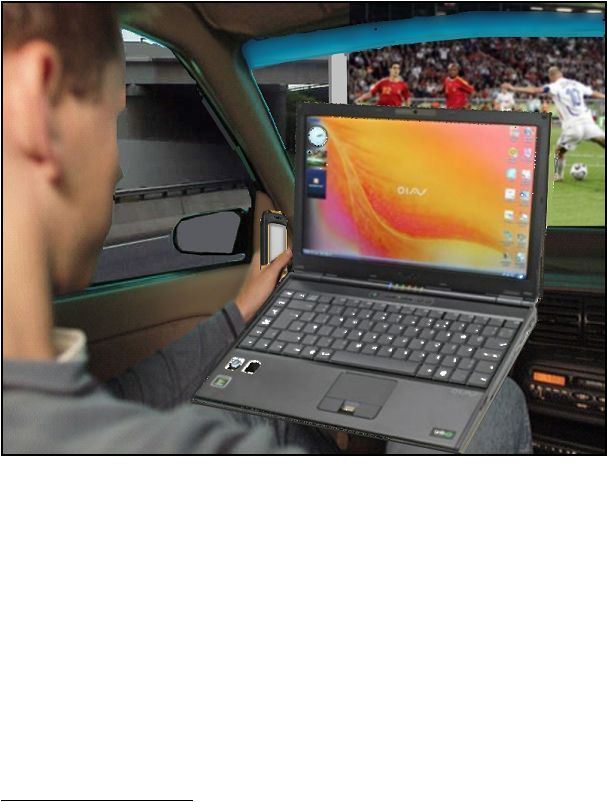
5.4.5
Comfort and Convenience of the ELECAT
The success of the ELECAT would depend upon delivering a superior mode of transport for longer car journeys
by releasing motorists from the tedious job of driving along the highway to engage in more productive or
entertaining activities. This is achieved by providing car drivers and passengers with access to an on-board
communications network and audio-visual entertainment, as well as privacy by using a thin screen to partition
off each compartment of the ELECAT. Video or TV images could be shown on the partition screen and sound
channelled through the car speakers via a power and communications cable, which would also charge the car
batteries (see figure 21). This would be particularly beneficial for businesses who could substantially increase
the work utilisation of their employees whilst driving.
Figure 21 ELECAT Media
The ELECAT would provide the means to utilise the time travelling on highways by providing a range of media
options for personal and business use. Here a driver can fix his laptop on a steering wheel mount, watch TV or
teleconference on the partition screen, use mobile telecommunications, or just rest.
5.4.6
Cost of the ELECAT
To be economically competitive, the cost of running an ELECAT must not exceed that of driving the cars it
carries individually. The relative cost of using the ELECAT relative to driving an individual car is illustrated
48
This example is based on standard motoring and drivers time costs, and transporting 7 average
sized IC engined hatchback cars.
The base case calculation first assumes that the private car driver’s time has ‘zero value’, therefore, only the
operating cost/hr of the cars and ELECAT are taken into account. The two green lines represent these fixed
levels. The solid green line represents the cost/hr of driving an average car, and the dotted green line represents
the cost/hr of being transported on the ELECAT. Both these have similar values, with the ELECAT mode being
slightly cheaper in this example.
48 see spreadsheet 4 ‘Elecat Operating Costs’ Note, the spreadsheet can be downloaded and used with different variables.

